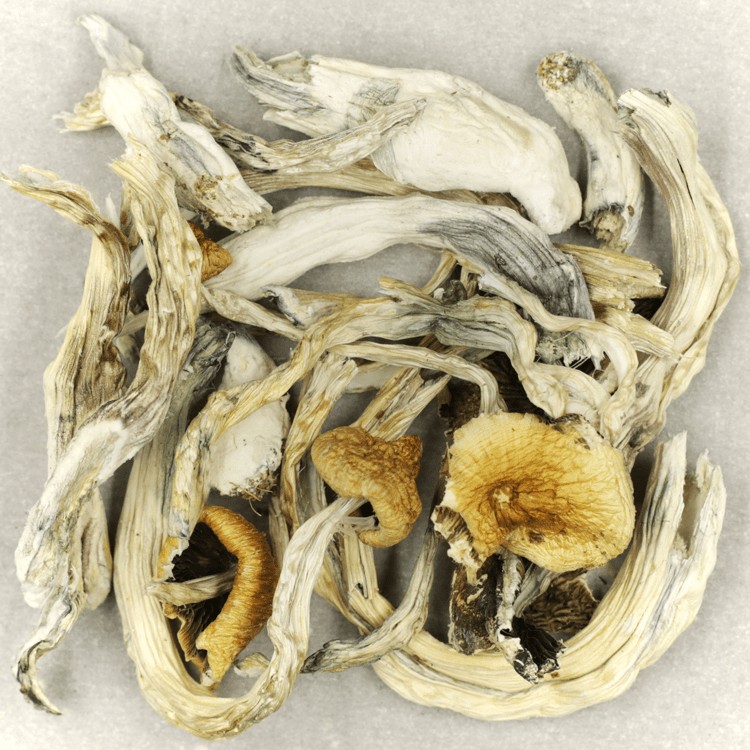The Treasure Coast Mushroom is a widely used strain of magic mushrooms, recognized for its potential to boost creative thinking and inspire innovative mental processes.
Writer’s block, a common challenge among authors, is the difficulty encountered when trying to conceive or execute fresh ideas.
At times, mental blocks are the result of psychological factors like fear of criticism, the quest for perfection, or external stress. Though there are numerous tactics to tackle these issues, shrooms can sometimes offer a faster and more potent pathway to creative thoughts for some individuals.

Key Takeaways:
- Treasure Coast mushrooms enhance creativity by promoting divergent thinking.
- The considerable psilocybin content briefly disrupts the brain’s default mode network, fostering spontaneous idea generation and introspection.
- Potentially, even a week post-psilocybin ingestion, creativity can be heightened through an improved ability to formulate new ideas.
Getting to Know Treasure Coast Mushrooms:
Scientifically identified as Psilocybe cubensis, these mushrooms originate from the Treasure Coast area of Florida, which is reflected in their name. They are notable for their fast growth rate.
- They feature a distinct caramel to golden brown cap that can reach up to 5 centimetres in diameter.
- The cap, with its wavy edges, resembles a miniature sombrero.
- Underneath the cap is a thick layer of gills that can vary in colour from light yellow to a darker brown hue.
- Upon maturity, it leaves behind a purple-black spore print.
- The stem is strong and thick, ranging between 5 to 15 centimetres in height. It often turns blue when touched, indicating more than just a visual trait; it’s a chemical reaction signifying the presence of psilocin, a powerful psychoactive compound that affects the brain.
Note: When discovered, less pigmented variations known as leucistic strains can occur, which markedly resemble the original strain.
Effectiveness and Influence
While it may not rival robust strains like Penis Envy, it still provides a psychedelic experience that is far from commonplace. Users have reported typical psilocybin effects such as mood shifts, enhanced perceptions, and insightful revelations.
Brief Cultural History
Historically, the consumption of mushrooms dates back to ancient civilizations, with proof of their use in spiritual and healing rituals in areas ranging from Mesoamerica to modern-day Canada.
These mystical fungi were used by native communities in ceremonies to establish deep relationships with the spiritual realm, utilizing their visionary properties for healing and strengthening community ties.
Scientific Rationale of Psilocybin’s Effect on Creativity
A recent study featured in the Journal of Transnational Psychiatry used ultrahigh-field multimodal brain imaging to investigate these effects in real-time. The research demonstrated that psilocybin increases connectivity within and amongst various brain networks, which was linked to a surge in “spontaneous” creativity.
Perception and Cognitive Ability Alterations
After ingestion, psilocybin reaches peak levels in the bloodstream (15.61 ng/mL) approximately 80 minutes later, leading to reported alterations in sensory perception and cognitive performance.
- Colours seem more vibrant
- Objects appear to throb or transform
- Spatial awareness alterations might occur
An increased concentration of glutamate was observed in the medial prefrontal cortex, an area linked to higher thinking and decision-making processes. In contrast, it decreased glutamate levels in the hippocampus, a region related to memory.
Research Outcomes
Is psilocybin truly a creativity booster, or is it just
Does the Journal of Transnational Psychiatry study address the question of perception? By exploring “spontaneous” and “deliberate” thought processes, it does.
Spontaneous creativity refers to those sudden, raw ideas that pop into your mind, while deliberate creativity involves focused problem-solving and task-oriented thinking. Researchers have noted that spontaneous thought processes are often amplified, while deliberate ones temporarily diminished.
- Tasks such as the Picture Concept Task (PCT) and the Alternative Uses Task (AUT) were used to evaluate participants’ originality, resulting in extremely reliable scores of 0.95 and 0.91 respectively.
- After consuming the substance, participants reported a rise in insightful feelings, suggesting a heightened connection to innovative ideas.
- The participants’ task-focused thoughts were reduced, likely due to the brain’s more flexible connections overpowering the linear problem-solving process.
- Participants showed an increase in the generation of unique ideas a week after exposure, suggesting that the brain’s restructuring may have a long-term effect, enhancing originality even after the substance has worn off.
Divergent Thinking and Problem Solving
Divergent thinking, the capacity to devise multiple solutions to a single problem, is a fundamental aspect of creativity. The compound helps the brain to break down traditional thinking barriers and consider ideas that might typically be disregarded as nonsensical or improbable.
Psychedelic substances with sufficient milligrams to trigger hallucinations aim at serotonin 5-HT2A receptors in the brain, interrupting normal thought patterns and fostering cognitive flexibility and divergent thinking. This could provide a way to access creativity.
Guidance for Writers Using Treasure Coast Mushrooms
Feeling stuck in a creative rut? The potential creativity boost offered by mushrooms could be worth exploring. For beginners, it’s recommended to start with small doses to safely test the creativity-enhancing effects of this fascinating substance.
Dosing Recommendations for Creative Exploration
| Microdose (0.1 – 0.3 grams) | This dose won’t cause visual effects, but it can enhance focus, mood, and creativity without disrupting your daily life. |
| Low Dose (0.5 – 1 gram) | This dosage may boost and mood while also causing slight alterations. |
| Moderate Dose (1 – 2 grams) | At this amount, expect more evident effects such as visual distortions, a heightened sense of interconnectedness, and stronger emotional responses. |
Importance of “Set” and “Setting”
- Set: Make sure to consider your intentions before you start. Are you trying to generate fresh ideas? Explore your character’s mindset. Enter the session with an open mind, prepared for potential psychological discovery.
- Setting: A perfect place would be comfortable and familiar. Think about a calm room, perhaps decorated with elements that enhance the atmosphere such as dim lights, soft instrumental music, and a notepad at hand. If possible, let a reliable friend know about your session or ask them to be there as a sober, supportive “trip-sitter”, just in case.
Techniques to Try While Under the Influence
Freeform Thought Writing
Psilocybin tends to lower one’s usual filters and enables thoughts to flow freely. This includes writing down whatever comes to mind without self-censorship, scrutiny, or worrying about its logical consistency.
Continuous Association
An interesting experiment to consider involves writing down words as they pop up, even if they seem unrelated. This could potentially connect unconnected thoughts, so document any words that arise, follow the thought process wherever it goes, and see if new themes or patterns for your work can be discerned.
Dialogue with Characters
If you’re working on fiction, think about having a direct conversation with your characters. This can blur the lines between the creator and the created, allowing you to delve into different viewpoints. Ask questions like, “What do you want to do next?” or “What frightens you?” Record their “replies” as they come to you.
Wrapping Up Your Visionary Journey
As a member of the Psilocybe cubensis family, Treasure Coast has traits that are beneficial for the artistic process, encouraging enhanced introspection, sensory perception, and openness.
For writers, this isn’t
Creativity stretches beyond fleeting inspiration; it’s about harnessing tools that can break through creative barriers, intensify sensory perceptions, and encourage distinct means of expression. Remember, psilocybin, sourced from a shroom online, serves as a catalyst, not a substitute for innate talent or consistent hard work.
Frequently Asked Questions
How should one reflect on and incorporate the psilocybin experience?
After the session, writers should review their notes or recorded thoughts, pinpointing any recurring themes, symbols, or emotions that connect with their work. Keeping a “trip journal” and summarizing fresh ideas or emotional shifts can help them comprehend their experience.
How long do the creative effects of Treasure Coast mushrooms last?
The effects last for 4-6 hours, but the boost in creativity could extend for several days. Enhanced creative thinking, particularly the generation of innovative ideas, can persist even a week after a session. This “afterglow” phase, marked by increased open-mindedness and cognitive flexibility, is an ideal time to polish or build upon the ideas generated during the experience.
Are there any famous writers or artists who have used psychedelics for creative inspiration?
The author Aldous Huxley experimented with mescaline and later LSD, detailing his experiences in The Doors of Perception. Counterculture writers like Allen Ginsberg and Jack Kerouac, as well as musicians such as The Beatles, are also recognized for their usage of psychedelics.
Although they didn’t specifically use Treasure Coast, their work illustrates the long-standing link between psychedelics and creativity in the fields of art and literature.





